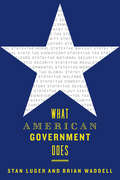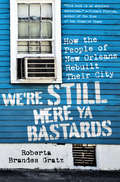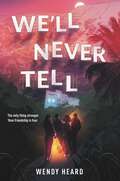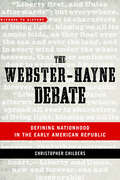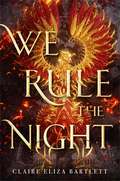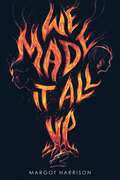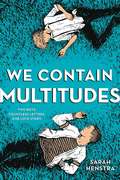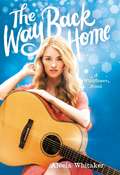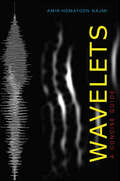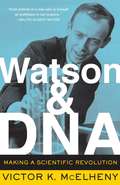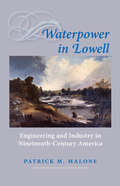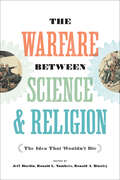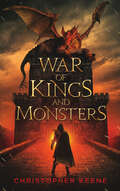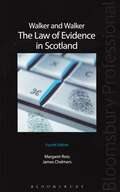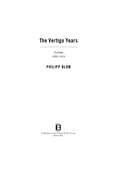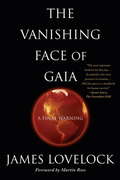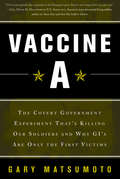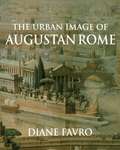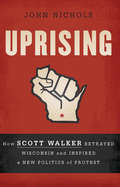- Table View
- List View
What American Government Does
by Stan Luger Brian WaddellIt has become all too easy to disparage the role of the US government today. Many Americans are influenced by a simplistic anti-government ideology that is itself driven by a desire to roll back the more democratically responsive aspects of public policy. But government has improved the lives of Americans in numerous ways, from providing income, food, education, housing, and healthcare support, to ensuring cleaner air, water, and food, to providing a vast infrastructure upon which economic growth depends. In What American Government Does, Stan Luger and Brian Waddell offer a practical understanding of the scope and function of American governance. They present a historical overview of the development of US governance that is rooted in the theoretical work of Charles Tilly, Karl Polanyi, and Michael Mann. Touching on everything from taxes, welfare, and national and domestic security to the government’s regulatory, developmental, and global responsibilities, each chapter covers a main function of American government and explains how it emerged and then evolved over time. Luger and Waddell are careful to both identify the controversies related to what government does and those areas of government that should elicit concern and vigilance. Analyzing the functions of the US government in terms of both a tug-of-war and a collaboration between state and societal forces, they provide a reading of American political development that dispels the myth of a weak, minimal, non-interventionist state.What American Government Does represents a major contribution to the scholarly debate on the nature of the American state and the exercise of power in America.
What American Government Does
by Stan Luger Brian WaddellIt has become all too easy to disparage the role of the US government today. Many Americans are influenced by a simplistic anti-government ideology that is itself driven by a desire to roll back the more democratically responsive aspects of public policy. But government has improved the lives of Americans in numerous ways, from providing income, food, education, housing, and healthcare support, to ensuring cleaner air, water, and food, to providing a vast infrastructure upon which economic growth depends. In What American Government Does, Stan Luger and Brian Waddell offer a practical understanding of the scope and function of American governance. They present a historical overview of the development of US governance that is rooted in the theoretical work of Charles Tilly, Karl Polanyi, and Michael Mann. Touching on everything from taxes, welfare, and national and domestic security to the government’s regulatory, developmental, and global responsibilities, each chapter covers a main function of American government and explains how it emerged and then evolved over time. Luger and Waddell are careful to both identify the controversies related to what government does and those areas of government that should elicit concern and vigilance. Analyzing the functions of the US government in terms of both a tug-of-war and a collaboration between state and societal forces, they provide a reading of American political development that dispels the myth of a weak, minimal, non-interventionist state.What American Government Does represents a major contribution to the scholarly debate on the nature of the American state and the exercise of power in America.
We're Still Here Ya Bastards: How the People of New Orleans Rebuilt Their City
by Roberta Brandes GratzThe aftermath of Hurricane Katrina is one of the darkest chapters in American history. The storm caused unprecedented destruction, and a toxic combination of government neglect and socioeconomic inequality turned a crisis into a tragedy. But among the rubble, there is hope.We're Still Here Ya Bastards presents an extraordinary panoramic look at New Orleans's revival in the years following the hurricane. Award-winning journalist Roberta Brandes Gratz shares the stories of people who returned to their homes and have taken the rebuilding of their city into their own hands. She shows how the city-from the Lower Ninth Ward to the storied French Quarter to Bayou Bienvenue-is recovering despite flawed governmental policies that promote disaster capitalism rather than the public good. While tracing positive trends, Gratz also investigates the most fiercely debated issues and challenges facing the city: a violent and corrupt prison system, the tragic closing of Charity Hospital, the future of public education, and the rise of gentrification.By telling stories that are often ignored by the mainstream media, We're Still Here Ya Bastards shows the strength and resilience of a community that continues to work to rebuild New Orleans, and reveals what Katrina couldn't destroy: the vibrant culture, epic history, and unwavering pride of one of the greatest cities in America.
We're Still Here Ya Bastards: How the People of New Orleans Rebuilt Their City
by Roberta Brandes GratzThe aftermath of Hurricane Katrina is one of the darkest chapters in American history. The storm caused unprecedented destruction, and a toxic combination of government neglect and socioeconomic inequality turned a crisis into a tragedy. But among the rubble, there is hope.We're Still Here Ya Bastards presents an extraordinary panoramic look at New Orleans's revival in the years following the hurricane. Award-winning journalist Roberta Brandes Gratz shares the stories of people who returned to their homes and have taken the rebuilding of their city into their own hands. She shows how the city -- from the Lower Ninth Ward to the storied French Quarter to Bayou Bienvenue -- is recovering despite flawed governmental policies that promote disaster capitalism rather than the public good. While tracing positive trends, Gratz also investigates the most fiercely debated issues and challenges facing the city: a violent and corrupt prison system, the tragic closing of Charity Hospital, the future of public education, and the rise of gentrification. By telling stories that are often ignored by the mainstream media, We're Still Here Ya Bastards shows the strength and resilience of a community that continues to work to rebuild New Orleans, and reveals what Katrina couldn't destroy: the vibrant culture, epic history, and unwavering pride of one of the greatest cities in America.
We'll Never Tell
by Wendy Heard"Those who love One of Us Is Lying, will devour this page-turner." (Buzzfeed) Delve into a murderous, twisty whodunit doused in juicy Hollywood lore. No one at Hollywood High knows who&’s behind We'll Never Tell—a viral YouTube channel where the anonymous creators trespass behind the scenes of LA's most intriguing locales. The team includes CASEY, quiet researcher and trivia champ; JACOB, voice narrator and video editor, who is secretly dating EDDIE, aspiring filmmaker; and ZOE, coder and breaking-and-entering extraordinaire. Now senior year is winding down and with their lives heading in different directions, the YouTubers vow to go out with a bang. Their last episode will be filmed at the infamous Valentini &“murder house,&” which has been left abandoned, bloodstained, and untouched since a shocking murder/suicide in 1972. When the teens break in, they capture epic footage. But someone trips an alarm, and it&’s a mad dash to get out before the police arrive—at which point they realize only three of them escaped instead of four. Jacob is still inside, slain and bleeding out. Is his attack connected to the historic murder, or is one of their crew responsible? A week of suspicions and cover-ups unfolds as Casey and her remaining friends try to stay alive long enough to solve murder mysteries past and present. If they do, their friendship may not survive. If they don't, the house will claim more victims.
The Webster-Hayne Debate: Defining Nationhood in the Early American Republic (Witness to History)
by Christopher ChildersTwo generations after the founding, Americans still disagreed on the nature of the Union. Was it a confederation of sovereign states or a nation headed by a central government? To South Carolina Senator Robert Y. Hayne and others of his mindset, only the vigilant protection of states;€™ rights could hold off an attack on the southern way of life, which was undergirded by slavery. Massachusetts Senator Daniel Webster, on the other hand, believed that the political and economic ascendancy of New England;¢;‚¬;€?and the nation;¢;‚¬;€?required a strong, activist national government. In The Webster-Hayne Debate, Christopher Childers focuses on the sharp dispute that engaged Webster and Hayne in January 1830. During Senate discussion of western land policy, Childers explains, the senators;€™ exchanges grew first earnest and then heated, finally landing on the question of union;¢;‚¬;€?its nature and its value in a federal republic. Childers argues that both Webster and Hayne, and the factions they represented, saw the West as key to the success of their political plans and sought to cultivate western support for their ideas.A short, accessible account of the conflict and the related issues it addressed, The Webster-Hayne Debate captures an important moment in the early republic. Ideal for use in college classrooms or for readers interested in American history, this book examines a pivotal moment and a critical problem in the history of US politics. It also shows how Americans grappled with the issues of nationalism, sectionalism, and the meaning of union itself;¢;‚¬;€?issues that still resonate today.
The Webster-Hayne Debate: Defining Nationhood in the Early American Republic (Witness to History)
by Christopher ChildersTwo generations after the founding, Americans still disagreed on the nature of the Union. Was it a confederation of sovereign states or a nation headed by a central government? To South Carolina Senator Robert Y. Hayne and others of his mindset, only the vigilant protection of states;€™ rights could hold off an attack on the southern way of life, which was undergirded by slavery. Massachusetts Senator Daniel Webster, on the other hand, believed that the political and economic ascendancy of New England;¢;‚¬;€?and the nation;¢;‚¬;€?required a strong, activist national government. In The Webster-Hayne Debate, Christopher Childers focuses on the sharp dispute that engaged Webster and Hayne in January 1830. During Senate discussion of western land policy, Childers explains, the senators;€™ exchanges grew first earnest and then heated, finally landing on the question of union;¢;‚¬;€?its nature and its value in a federal republic. Childers argues that both Webster and Hayne, and the factions they represented, saw the West as key to the success of their political plans and sought to cultivate western support for their ideas.A short, accessible account of the conflict and the related issues it addressed, The Webster-Hayne Debate captures an important moment in the early republic. Ideal for use in college classrooms or for readers interested in American history, this book examines a pivotal moment and a critical problem in the history of US politics. It also shows how Americans grappled with the issues of nationalism, sectionalism, and the meaning of union itself;¢;‚¬;€?issues that still resonate today.
We Rule the Night
by Claire Eliza BartlettTwo girls use forbidden magic to fly and fight--for their country and for themselves--in this riveting debut that's part Shadow and Bone, part Code Name Verity.Seventeen-year-old Revna is a factory worker, manufacturing war machines for the Union of the North. When she's caught using illegal magic, she fears being branded a traitor and imprisoned. Meanwhile, on the front lines, Linné defied her father, a Union general, and disguised herself as a boy to join the army. They're both offered a reprieve from punishment if they use their magic in a special women's military flight unit and undertake terrifying, deadly missions under cover of darkness. Revna and Linné can hardly stand to be in the same cockpit, but if they can't fly together, and if they can't find a way to fly well, the enemy's superior firepower will destroy them--if they don't destroy each other first.We Rule the Night is a fiercely compelling story about sacrifice, complicated friendships, and survival against impossible odds.
We Made It All Up
by Margot HarrisonA contemporary, high-stakes thriller about how reality becomes more twisted than the fantasy novel two friends are writing when the real-life subject of their fiction turns up dead and they&’re the suspects, for fans of Mare of Easttown and One of Us Is Lying.Celeste is the talk of the town when she moves to Montana from Montreal, but the only friend she makes is Vivvy, the heir to the town&’s founder and a social pariah. Inspired by a passion-fueled school incident, they begin writing a love-story fanfic between the popular guy and the school stoner, one that gradually reveals Celeste&’s past. While her bond with Vivvy makes Celeste feel safe and alive again, Vivvy keeps prodding Celeste to turn fantasy into reality. When they finally try, one drunken night on a dark mountainside, Celeste is the one who ends up kissing golden boy Joss. And Joss ends up dead.Celeste doesn&’t remember the end of that night and can&’t be sure she didn&’t deliver the killing blow. Could she still be that scared of getting close to a boy? Secrets are hard to keep in a small town, and even Vivvy seems to suspect her. Exploring the winding passages of the cave where Joss died, Celeste learns he had his own dark secrets, as does Vivvy. The town isn&’t as innocent as it appears.
We Contain Multitudes
by Sarah HenstraAristotle and Dante Discover the Secrets of the Universe meets I'll Give You the Sun in an exhilarating and emotional novel about the growing relationship between two teenage boys, told through the letters they write to one another. Jonathan Hopkirk and Adam "Kurl" Kurlansky are partnered in English class, writing letters to one another in a weekly pen pal assignment. With each letter, the two begin to develop a friendship that eventually grows into love. But with homophobia, bullying, and devastating family secrets, Jonathan and Kurl struggle to overcome their conflicts and hold onto their relationship...and each other.This rare and special novel celebrates love and life with engaging characters and stunning language, making it perfect for fans of Jandy Nelson, Nina LaCour, and David Levithan.
The Way Back Home (Wildflower #3)
by Alecia WhitakerMusic sensation Bird Barrett is hitting the road, headlining her first national tour after the launch of her second album. Singing to sold-out crowds can mess with a girl's sense of perspective, though. Luckily, Bird has her older brother, Dylan, and her best friend, Stella, along for the ride to keep her grounded. Then Dylan and Stella pair off as more than friends. Feeling left behind, Bird throws herself completely into her performances, cover shoots, and high-profile interviews. And the more she tries to distract herself with her career, the further she pushes everyone away-including her longtime crush, Adam Dean, who joined the tour as her opener. When Bird breaks down, she'll need help to find her footing again. But has she pushed everyone too far? In a life like this one, a country girl needs her family and friends-and maybe an old flame-most of all. A foot-stompin' finale to Alecia Whitaker's irresistible Wildflower series.
Wavelets: A Concise Guide
by Amir-Homayoon NajmiIntroduced nearly three decades ago as a variable resolution alternative to the Fourier transform, a wavelet is a short oscillatory waveform for analysis of transients. The discrete wavelet transform has remarkable multi-resolution and energy-compaction properties. Amir-Homayoon Najmi’s introduction to wavelet theory explains this mathematical concept clearly and succinctly. Wavelets are used in processing digital signals and imagery from myriad sources. They form the backbone of the JPEG2000 compression standard, and the Federal Bureau of Investigation uses biorthogonal wavelets to compress and store its vast database of fingerprints. Najmi provides the mathematics that demonstrate how wavelets work, describes how to construct them, and discusses their importance as a tool to investigate and process signals and imagery. He reviews key concepts such as frames, localizing transforms, orthogonal and biorthogonal bases, and multi-resolution. His examples include the Haar, the Shannon, and the Daubechies families of orthogonal and biorthogonal wavelets.Our capacity and need for collecting and transmitting digital data is increasing at an astonishing rate. So too is the importance of wavelets to anyone working with and analyzing digital data. Najmi’s primer will be an indispensable resource for those in computer science, the physical sciences, applied mathematics, and engineering who wish to obtain an in-depth understanding and working knowledge of this fascinating and evolving field.
Wavelets: A Concise Guide
by Amir-Homayoon NajmiIntroduced nearly three decades ago as a variable resolution alternative to the Fourier transform, a wavelet is a short oscillatory waveform for analysis of transients. The discrete wavelet transform has remarkable multi-resolution and energy-compaction properties. Amir-Homayoon Najmi’s introduction to wavelet theory explains this mathematical concept clearly and succinctly. Wavelets are used in processing digital signals and imagery from myriad sources. They form the backbone of the JPEG2000 compression standard, and the Federal Bureau of Investigation uses biorthogonal wavelets to compress and store its vast database of fingerprints. Najmi provides the mathematics that demonstrate how wavelets work, describes how to construct them, and discusses their importance as a tool to investigate and process signals and imagery. He reviews key concepts such as frames, localizing transforms, orthogonal and biorthogonal bases, and multi-resolution. His examples include the Haar, the Shannon, and the Daubechies families of orthogonal and biorthogonal wavelets.Our capacity and need for collecting and transmitting digital data is increasing at an astonishing rate. So too is the importance of wavelets to anyone working with and analyzing digital data. Najmi’s primer will be an indispensable resource for those in computer science, the physical sciences, applied mathematics, and engineering who wish to obtain an in-depth understanding and working knowledge of this fascinating and evolving field.
Watson And DNA: Making A Scientific Revolution (A Merloyd Lawrence Book)
by Victor K. McElhenyThe most influential scientist of the last century, James Watson has been at dead center in the creation of modern molecular biology. This masterful biography brings to life the extraordinary achievements not only of Watson but also all those working on this cutting edge of scientific discovery, such as Walter Gilbert, Francis Crick, François Jacob, and David Baltimore. From the ruthless competition in the race to identify the structure of DNA to a near mutiny in the Harvard biology department, to clashes with ethicists over issues in genetics, Watson has left a wake of detractors as well as fans. Victor McElheny probes brilliantly behind the veil of Watson's own invented persona, bringing us close to the relentless genius and scientific impresario who triggered and sustained a revolution in science.
Waterpower in Lowell: Engineering and Industry in Nineteenth-Century America (Johns Hopkins Introductory Studies in the History of Technology)
by Patrick M. MalonePatrick M. Malone demonstrates how innovative engineering helped make Lowell, Massachusetts, a potent symbol of American industrial prowess in the 19th century. Waterpower spurred the industrialization of the early United States and was the principal power for textile manufacturing until well after the Civil War. Industrial cities therefore grew alongside many of America’s major waterways. Ideally located at Pawtucket Falls on the Merrimack River, Lowell was one such city—a rural village rapidly transformed into a booming center for textile production and machine building. Malone explains how engineers created a complex canal and lock system in Lowell which harnessed the river and powered mills throughout the city. James B. Francis, arguably the finest engineer in 19th-century America, played a key role in the history of Lowell’s urban industrial development. An English immigrant who came to work for Lowell’s Proprietors of Locks and Canals as a young man, Francis rose to become both the company’s chief engineer and its managing executive. Linking Francis’s life and career with the larger story of waterpower in Lowell, Malone offers the only complete history of the design, construction, and operation of the Lowell canal system. Waterpower in Lowell informs broader understanding of urban industrial development, American scientific engineering, and the environmental impacts of technology. Its clear and instructional discussions of hydraulic technology and engineering principles make it a useful resource for a range of courses, including the history of technology, urban history, and American business history.
Washi Tape Crafts: 110 Ways to Decorate Just About Anything
by Amy AndersonIt&’s the definitive washi tape craft book for adults. Washi tape—the Japanese decorative paper tape that&’s easy to tear, peel, stick and re-stick—is transformative, fun, and remarkably easy to use. It&’s also never been hotter. Packed full of amazing projects and ideas, it&’s the book and tape kit that shows all the ways to be creative with washi tape. The book includes techniques: precision tearing, wrapping, and weaving. How to make bows, rosettes, and other shapes. How to seal and weatherproof designs to make them permanent. And 110 projects, with color photographs and step-by-step instructions, from custom photo frames to one-of-a-kind gifts. The possibilities are endless.
The Warfare between Science and Religion: The Idea That Wouldn't Die
by Jeff Hardin Ronald L. Numbers Ronald A. BinzleyThe "conflict thesis";¢;‚¬;€?the idea that an inevitable and irreconcilable conflict exists between science and religion;¢;‚¬;€?has long been part of the popular imagination. In The Warfare between Science and Religion, Jeff Hardin, Ronald L. Numbers, and Ronald A. Binzley have assembled a group of distinguished historians who explore the origin of the thesis, its reception, the responses it drew from various faith traditions, and its continued prominence in public discourse. Several essays in the book examine the personal circumstances and theological idiosyncrasies of important intellectuals, including John William Draper and Andrew Dickson White, who through their polemical writings championed the conflict thesis relentlessly. Other essays consider what the thesis meant to different religious communities, including evangelicals, liberal Protestants, Roman Catholics, Eastern Orthodox Christians, Jews, and Muslims. Finally, essays both historical and sociological explore the place of the conflict thesis in popular culture and intellectual discourse today. Based on original research and written in an accessible style, the essays in The Warfare between Science and Religion take an interdisciplinary approach to question the historical relationship between science and religion. This volume, which brings much-needed perspective to an often bitter controversy, will appeal to scholars and students of the histories of science and religion, sociology, and philosophy.Contributors: Thomas H. Aechtner, Ronald A. Binzley, John Hedley Brooke, Elaine Howard Ecklund, Noah Efron, John H. Evans, Maurice A. Finocchiaro, Frederick Gregory, Bradley J. Gundlach, Monte Harrell Hampton, Jeff Hardin, Peter Harrison, Bernard Lightman, David N. Livingstone, David Mislin, Efthymios Nicolaidis, Mark A. Noll, Ronald L. Numbers, Lawrence M. Principe, Jon H. Roberts, Christopher P. Scheitle, M. Alper Yal;§inkaya
The Warfare between Science and Religion: The Idea That Wouldn't Die
by Jeff Hardin Ronald L. Numbers Ronald A. BinzleyThe "conflict thesis";¢;‚¬;€?the idea that an inevitable and irreconcilable conflict exists between science and religion;¢;‚¬;€?has long been part of the popular imagination. In The Warfare between Science and Religion, Jeff Hardin, Ronald L. Numbers, and Ronald A. Binzley have assembled a group of distinguished historians who explore the origin of the thesis, its reception, the responses it drew from various faith traditions, and its continued prominence in public discourse. Several essays in the book examine the personal circumstances and theological idiosyncrasies of important intellectuals, including John William Draper and Andrew Dickson White, who through their polemical writings championed the conflict thesis relentlessly. Other essays consider what the thesis meant to different religious communities, including evangelicals, liberal Protestants, Roman Catholics, Eastern Orthodox Christians, Jews, and Muslims. Finally, essays both historical and sociological explore the place of the conflict thesis in popular culture and intellectual discourse today. Based on original research and written in an accessible style, the essays in The Warfare between Science and Religion take an interdisciplinary approach to question the historical relationship between science and religion. This volume, which brings much-needed perspective to an often bitter controversy, will appeal to scholars and students of the histories of science and religion, sociology, and philosophy.Contributors: Thomas H. Aechtner, Ronald A. Binzley, John Hedley Brooke, Elaine Howard Ecklund, Noah Efron, John H. Evans, Maurice A. Finocchiaro, Frederick Gregory, Bradley J. Gundlach, Monte Harrell Hampton, Jeff Hardin, Peter Harrison, Bernard Lightman, David N. Livingstone, David Mislin, Efthymios Nicolaidis, Mark A. Noll, Ronald L. Numbers, Lawrence M. Principe, Jon H. Roberts, Christopher P. Scheitle, M. Alper Yal;§inkaya
War of Kings and Monsters
by Christopher KeeneChristopher Keene has once again enthralled readers with a one-of-a-kind medieval world full of spectacular magic and fantastic beasts that only a few can tame.
Walker and Walker: The Law of Evidence in Scotland (4th edition) (PDF)
by Margaret Ross James ChalmersWalker and Walker: The Law of Evidence in Scotland gives a comprehensive and detailed examination of the law of evidence in the broadest of civil and criminal contexts. The emphasis is upon rigorous examination of the issues affecting all who work with the law of evidence whether in court, chamber practice or legal education. This classic text has been updated throughout and due attention is given to changes in the context of legal proceedings, to changes in the nature of the evidence available to parties, and to the direct impact of the European Convention on Human Rights. Full account is also taken of the Criminal Justice (Scotland) Bill. Previous print edition ISBN: 9781845921651
The Vertigo Years: Europe, 1900-1914
by Philipp BlomEurope, 1900-1914: a world adrift, a pulsating era of creativity and contradictions. The major topics of the day: terrorism, globalization, immigration, consumerism, the collapse of moral values, and the rivalry of superpowers. The twentieth century was not born in the trenches of the Somme or Passchendaele-but rather in the fifteen vertiginous years preceding World War I.In this short span of time, a new world order was emerging in ultimately tragic contradiction to the old. These were the years in which the political and personal repercussions of the Industrial Revolution were felt worldwide: Cities grew like never before as people fled the countryside and their traditional identities; science created new possibilities as well as nightmares; education changed the outlook of millions of people; mass-produced items transformed daily life; industrial laborers demanded a share of political power; and women sought to change their place in society-as well as the very fabric of sexual relations.From the tremendous hope for a new century embodied in the 1900 World's Fair in Paris to the shattering assassination of a Habsburg archduke in Sarajevo in 1914, historian Philipp Blom chronicles this extraordinary epoch year by year. Prime Ministers and peasants, anarchists and actresses, scientists and psychopaths intermingle on the stage of a new century in this portrait of an opulent, unstable age on the brink of disaster.Beautifully written and replete with deftly told anecdotes, The Vertigo Years brings the wonders, horrors, and fears of the early twentieth century vividly to life.
The Vanishing Face of Gaia: A Final Warning
by James LovelockThe global temperature is rising, the ice caps are melting, and levels of pollution across the world have reached unprecedented heights. According to eminent scientist James Lovelock, in order to survive an assault from her dependents, the Earth is lurching ever closer to a permanent "hot state.” Within the next century, we will almost certainly be forced to give up many of the comforts of western living as supplies are threatened. Only the fittest-and the smartest-will survive.A reluctant jeremiad from one of the environmental movement's elder statesmen, The Vanishing Face of Gaia offers an essential wake-up call for the human race.
Vaccine A: The Covert Government Experiment That's Killing Our Soldiers--and Why GI's Are Only the First Victim
by Gary MatsumotoIn this provocative look at the US military from the Persian Gulf War through the 2003 invasion of Iraq, investigative journalist Gary Matsumoto contends that an anthrax vaccine dispensed by the Department of Defense was the cause of Gulf War Syndrome and the origins of a massive cover-up. Matsumoto calls it the worst friendly-fire incident in military history. A skillfully-woven narrative that serves as a warning about this man-made epidemic, Vaccine A is a much needed account of just what went wrong, and why.
The Urban Image of Augustan Rome (PDF)
by Diane FavroExamines the idea and experience of the ancient city at a critical moment, when Rome became an Imperial capital. This book explores for the first time the motives for urban intervention, methods for implementation and broader design issues such as formal urban strategies and definitions of urban imagery. The Urban Image of Augustan Rome examines the idea and experience of the ancient city at a critical moment, when Rome became an Imperial capital. Lacking dignity, unity, and a clear image during the Republic, the urban image of Rome became focused only when the state came under the control of Augustus, the first emperor, who transformed the city physically and conceptually. Intervening in an ad hoc manner, he repaired existing public structures, added numerous new monuments, established municipal offices for urban care, and promoted an enduring aesthetic. Directed by a single vision, the cumulative results were forceful and unified. This book explores for the first time the motives for urban intervention, methods for implementation and the socio-political context of the Augustan period, as well as broader design issues such as formal urban strategies and definitions of urban imagery.
Uprising: How Scott Walker Betrayed Wisconsin and Inspired a New Politics of Protest
by John NicholsOn February 11, 2011, Wisconsin Governor Scott Walker announced he would strip collective bargaining rights from public employees and teachers. In response, people rose up in mass protest, and Wisconsin became a reference point for a renewal of labor militancy and radical politics. These protests elicited extensive national media coverage, and drew more attention from the general public than any American labor struggle in decades.John Nichols's Uprising traces the roots of this struggle-which has faced legislative disappointments, legal challenges, and dramatic electoral twists and turns-and in the process reveals how Scott Walker rose to national prominence and went on to become a frontrunner in the Republican race for the nomination in 2016. At a time when public services are under assault from corporate privatizers and billionaire political donors, the public repudiation of Walker's efforts (and the shadowy interests like the Koch Brothers behind them) has translated into a broader challenge to corporate America, Wall Street, the far Right, and its media echo chamber.
